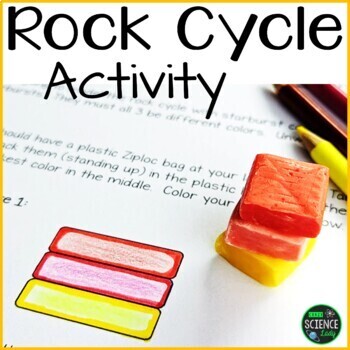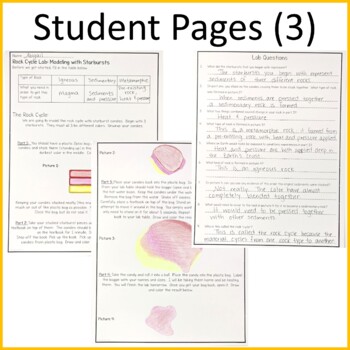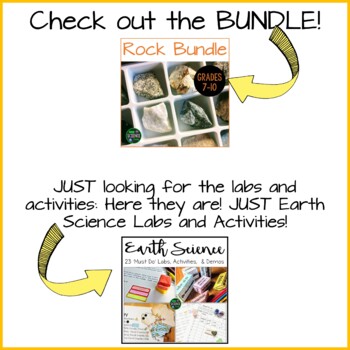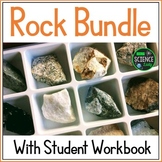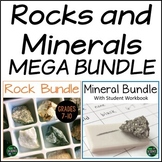Rock Cycle Lab Activity (with Starbursts)
- PDF
- Easel Activity
What educators are saying
Also included in
- Types of Rock: THE Rock Bundle: Want to teach types of rocks in the most ENGAGING way?! The key to teaching rocks WELL is to teach one type at a time. You'll introduce one rock type at a time: identify and learn about the individual rocks in the group, read about how they form, how they are describePrice $22.40Original Price $34.00Save $11.60
- This is a FULL YEAR Earth Science CURRICULUM. This continually growing curriculum contains PPTs, notes, labs, activities, task cards, diagramming, reviews, tests, etc. Your students will be DOING... constantly. Your class will BUILD the layers of the atmosphere, BUILD the mineral crystal shapes, re-Price $180.00Original Price $311.75Save $131.75
- Types of Rocks and the Rock Cycle AND Properties of Minerals COMBINED Bundles!Tired of textbooks meshing rocks and minerals? Teach them explicitly. I've combined two of my favorite bundles: my Properties and Uses of Mineral Bundle and my Rock Bundle: Types of Rocks. To be honest, I teach minerals inPrice $39.20Original Price $65.00Save $25.80
Description
Rock Cycle: Modeling the Rock Cycle with Starbursts
This activity is a perfect follow up for a class who has just been introduced to the rock cycle. You will need starbursts (or other fruit chews of multiple colors) and plastic sandwich bags. Students begin with 'sediments' which they turn into a sedimentary rock, apply heat and pressure to turn it into a metamorphic rock, and then you (the teacher) will need to take them home to turn them into igneous rocks. All teacher directions, with photos, included. Answer key also included. This lab takes 1.5 class periods and comes with follow up questions with key. Enjoy!
Related Products
⭐ Crystal Structure of Minerals: PPT, Notes, Activity
⭐ Earth Science Lab and Activity BUNDLE
⭐ Introduction to Minerals - PPT and Worksheets
⭐ Mineral BUNDLE - with Student Workbook!
⭐ Plate Tectonics Activity: Reading Tectonic Maps Handouts
⭐ Plate Tectonics Bundle: Worksheets - Activities - Pangea Puzzle
⭐ Plate Tectonics: Pangea Puzzle: Continental Drift
⭐ Plate Tectonics: Types of Plate Boundaries
⭐ Plate Tectonics: Types of Plate Boundaries Sorting Cards and Graphic Organizer
⭐ Properties of Minerals: PPT and Student Notes
⭐ Rock Bundle - Activities - Identification Labs - Reading Passages - Workbook
⭐ Teaching Rock Identification

